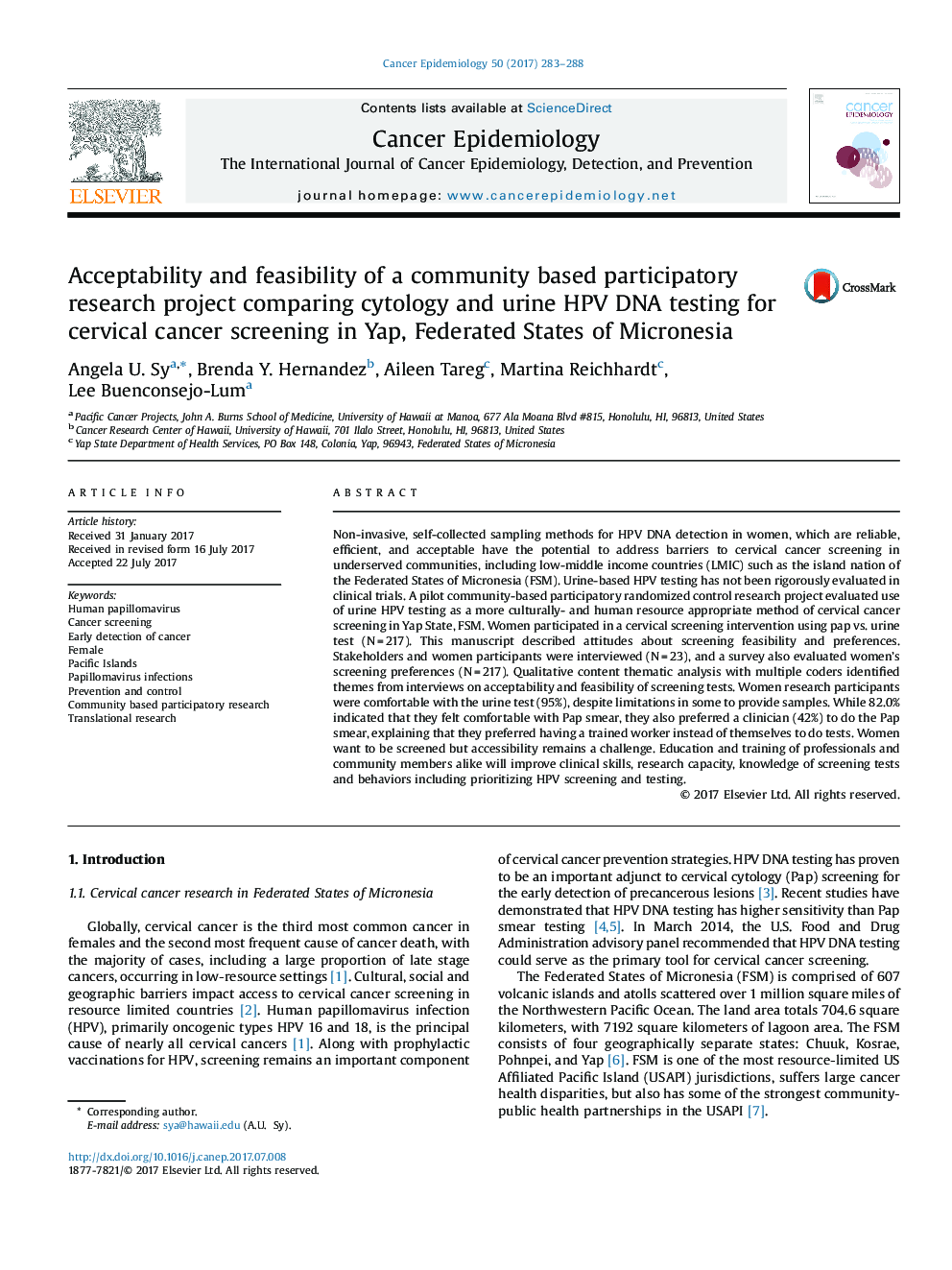| Article ID | Journal | Published Year | Pages | File Type |
|---|---|---|---|---|
| 8433045 | Cancer Epidemiology | 2017 | 6 Pages |
Abstract
Non-invasive, self-collected sampling methods for HPV DNA detection in women, which are reliable, efficient, and acceptable have the potential to address barriers to cervical cancer screening in underserved communities, including low-middle income countries (LMIC) such as the island nation of the Federated States of Micronesia (FSM). Urine-based HPV testing has not been rigorously evaluated in clinical trials. A pilot community-based participatory randomized control research project evaluated use of urine HPV testing as a more culturally- and human resource appropriate method of cervical cancer screening in Yap State, FSM. Women participated in a cervical screening intervention using pap vs. urine test (NÂ =Â 217). This manuscript described attitudes about screening feasibility and preferences. Stakeholders and women participants were interviewed (NÂ =Â 23), and a survey also evaluated women's screening preferences (NÂ =Â 217). Qualitative content thematic analysis with multiple coders identified themes from interviews on acceptability and feasibility of screening tests. Women research participants were comfortable with the urine test (95%), despite limitations in some to provide samples. While 82.0% indicated that they felt comfortable with Pap smear, they also preferred a clinician (42%) to do the Pap smear, explaining that they preferred having a trained worker instead of themselves to do tests. Women want to be screened but accessibility remains a challenge. Education and training of professionals and community members alike will improve clinical skills, research capacity, knowledge of screening tests and behaviors including prioritizing HPV screening and testing.
Keywords
Related Topics
Life Sciences
Biochemistry, Genetics and Molecular Biology
Cancer Research
Authors
Angela U. Sy, Brenda Y. Hernandez, Aileen Tareg, Martina Reichhardt, Lee Buenconsejo-Lum,
